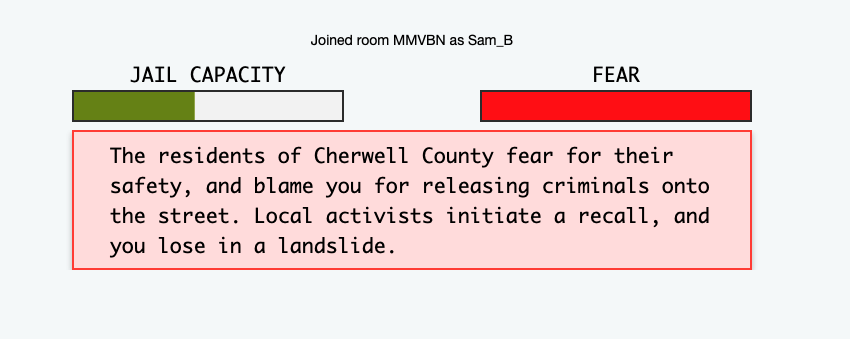As a big fan of true-crime podcasts, I love a good “falsely accused” / “Quest for Justice” story. This exercise reminded me a lot of last week’s attention economy exercise. Regardless of who you locked up or who you released you’d never seem to come out even. Nearly an impossible scenario as you either incarcerate too many alleged criminals and over-crowd jails or show too much leniency and some alleged criminals will re-offend.

The question for this task revolves around implications and consequences that AI-informed decision making brings to certain aspects of life. As prefaced, with my affinity to true-crime podcasts, the topic of The Crime Machine podcast regarding predictive policing algorithms was not a new one. In fact, I recently started listening to a new series from NPR’s Embedded featuring a police department in Yonkers, New York, where they are moving away from algorithms and towards more face-to-face interactions. That police force actually continues to use algorithms but to help prioritize the areas in which they focus their attention (rather than making arrests or meeting quotas – although that could be argued is simply semantics).
Whether it is professional sports (where analytics play an increasing important role in just about every sport) to policing as Cathy O’Neil (2017) points out, AI is changing our world. “Data scientists are stitching the status quo of the social order into models, like PredPol, that hold ever-greater sway over our lives.” There is no question that AI is having an impact on curriculum development, just look at the 2019 report from UNESCO entitled “The Impact of AI on curriculum systems: towards an orbit-shifting dialogue.
What I felt the exercise was missing was a more human connection. Instead of blurring the faces, I would have preferred to hear from the alleged criminals (or actors playing criminals). I felt the system’s instructions pushed the user to be more lenient and thereby ignore other factors. I tried to be lenient with non-violent offenders and jail the violent ones but that didn’t work out so well.
The big question I left the last two tasks with is: Do numbers lie or do they tell the whole story? Not sure I have come to a conclusion on that just yet. Data can definitely paint a picture, but they always leave gaps.
References
O’Neil, C. (2017, April 6). Justice in the age of big data. Retrieved June 18, 2019, from ideas.ted.com website: (Links to an external site.)https://ideas.ted.com/justice-in-the-age-of-big-data/